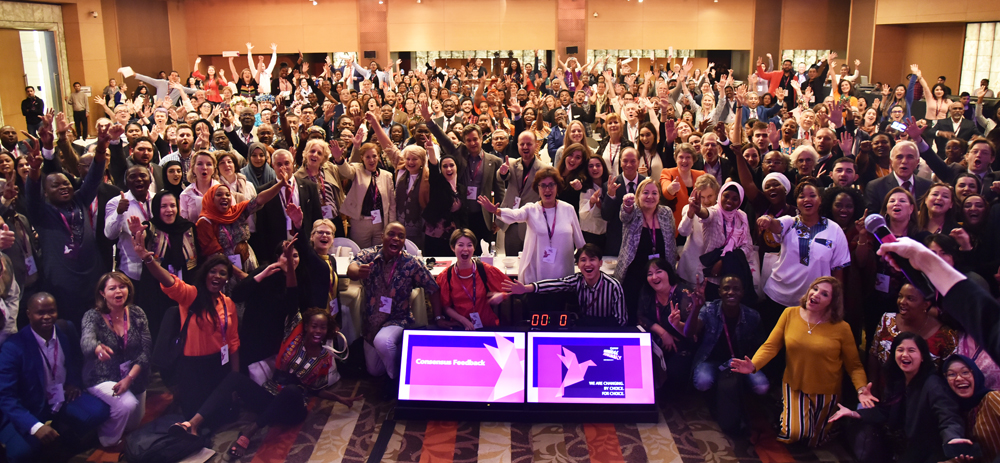More than 90% of IPPF’s MAs reached a historic consensus on bold recommendations for transforming IPPF’s governance and resource allocation structures.

The General Assembly called for:
An Ma-led governance structure that is accountable to the membership and the people IPPF serves.
The new governance structure removes intermediary layers between MAs and global governance and will advance IPPF’s mission through:
- General Assembly: The highest decision-making authority of the IPPF will be a General Assembly that has the mandate to review and approve IPPF’s strategic direction, appoint members of a Nominations and Governance Committee (NGC), and confirm the slate of candidates the NGC proposed to be on the Board of Trustees (BOT), among other responsibilities.
- Board of Trustees: The current Governing Council will be replaced with a 15-member, skills-based BOT that has 9 MA volunteers and 6 external trustees and maintains IPPF’s commitment to 20% representation of youth, 50% representation of women, geographical diversity, and representation of vulnerable or at-risk populations.
- Board Committees: Five Standing Committees will support the governance function of the BOT: Nominations and Governance; Membership; Finance, Audit and Risk; Policy, Strategy and Investment; and Resource Allocation Technical Committee. Each of these committees will have a majority of members from MAs, and will include non-Trustee members.
- Regional Forums and Regional Youth Forums: The current Regional Councils will be transformed into knowledge and learning exchange platforms, called Regional Forums, that will be preceded by Regional Youth Forums.
A stream-based model for resource allocation that is more strategic, transparent, and MA-led.
The new model will ensure that we better serve all people who rely on us, especially those at risk or most vulnerable. IPPF will allocate its core unrestricted funding along three streams to give predictability in funding as well as flexibility and agility in responding to emerging needs, as follows:
- Stream 1 – Accelerating the Response (80%): IPPF will devise a new formula for allocating resources to MAs (excluding high income countries) that is context, political, and culture-specific, and prioritizes reaching those most at risk of being left behind. IPPF also commits to advocate and mobilize resources with governments and other donors to ensure effective responses to SRHR needs and rights for vulnerable and underserved groups, regardless of national income status.
- Stream 2 – Strategic Fund (15%): IPPF will develop criteria for MAs to apply for competitive, proposal-based awards for developing strategic initiatives.
- Stream 3 – Initial Emergency Response (5%): IPPF will develop criteria for providing funding to MAs to support an initial response to humanitarian crises.
As part of the funding process, the unified Secretariat and all MAs, with support from the Secretariat, will present three-year work plans and budgets.